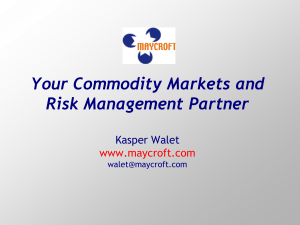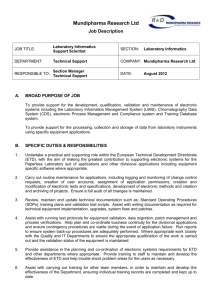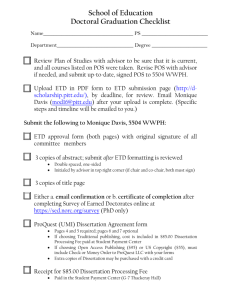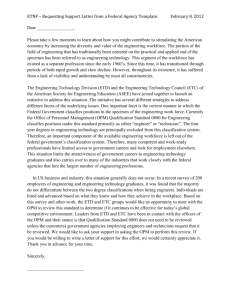Amsterdam, 27 October 2015 Dear Mr. Ingves,
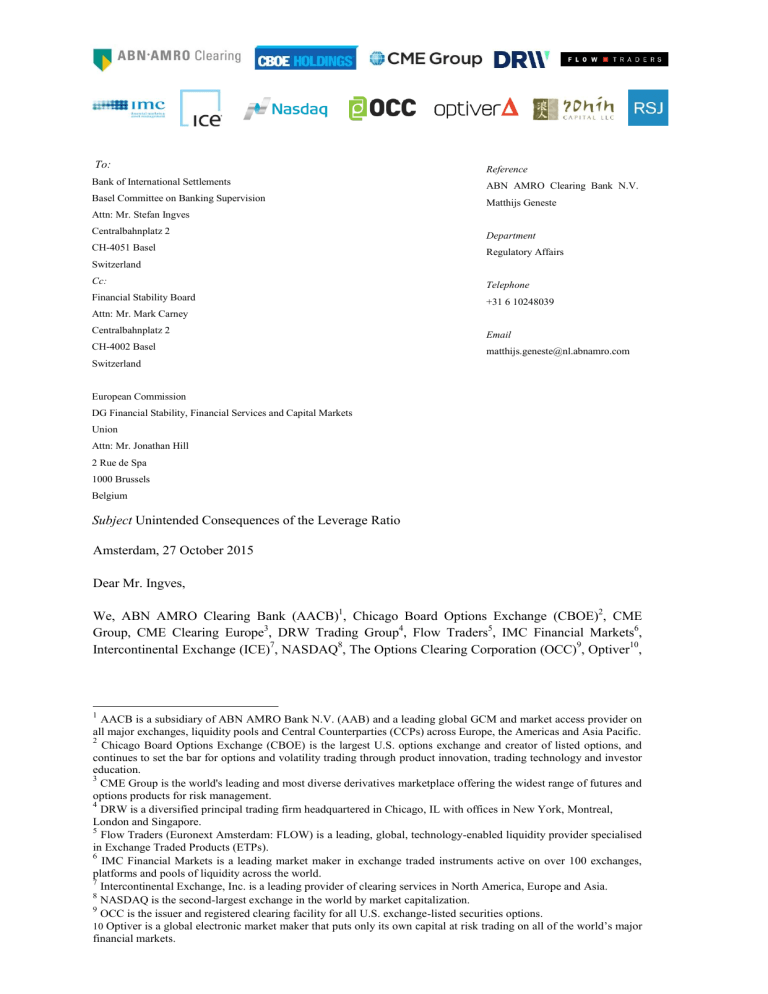
To:
Bank of International Settlements
Reference
ABN AMRO Clearing Bank N.V.
Basel Committee on Banking Supervision
Attn: Mr. Stefan Ingves
Centralbahnplatz 2
CH-4051 Basel
Switzerland
Cc:
Financial Stability Board
Attn: Mr. Mark Carney
Matthijs Geneste
Department
Regulatory Affairs
Telephone
+31 6 10248039
Centralbahnplatz 2
CH-4002 Basel
Switzerland
Email matthijs.geneste@nl.abnamro.com
European Commission
DG Financial Stability, Financial Services and Capital Markets
Union
Attn: Mr. Jonathan Hill
2 Rue de Spa
1000 Brussels
Belgium
Subject Unintended Consequences of the Leverage Ratio
Amsterdam, 27 October 2015
Dear Mr. Ingves,
We, ABN AMRO Clearing Bank (AACB)
1
, Chicago Board Options Exchange (CBOE)
2
, CME
Group, CME Clearing Europe
3
, DRW Trading Group
4
, Flow Traders
5
, IMC Financial Markets
6
,
Intercontinental Exchange (ICE)
7
, NASDAQ
8
, The Options Clearing Corporation (OCC)
9
, Optiver
10
,
1
AACB is a subsidiary of ABN AMRO Bank N.V. (AAB) and a leading global GCM and market access provider on all major exchanges, liquidity pools and Central Counterparties (CCPs) across Europe, the Americas and Asia Pacific.
2
Chicago Board Options Exchange (CBOE) is the largest U.S. options exchange and creator of listed options, and continues to set the bar for options and volatility trading through product innovation, trading technology and investor education.
3
CME Group is the world's leading and most diverse derivatives marketplace offering the widest range of futures and options products for risk management.
4
DRW is a diversified principal trading firm headquartered in Chicago, IL with offices in New York, Montreal,
London and Singapore.
5
Flow Traders (Euronext Amsterdam: FLOW) is a leading, global, technology-enabled liquidity provider specialised in Exchange Traded Products (ETPs).
6
IMC Financial Markets is a leading market maker in exchange traded instruments active on over 100 exchanges, platforms and pools of liquidity across the world.
7
Intercontinental Exchange, Inc. is a leading provider of clearing services in North America, Europe and Asia.
8
NASDAQ is the second-largest exchange in the world by market capitalization.
9
OCC is the issuer and registered clearing facility for all U.S. exchange-listed securities options.
10 Optiver is a global electronic market maker that puts only its own capital at risk trading on all of the world’s major financial markets.
Date
27.10.2015
Reference:
Page
2/7
Ronin Capital
11
and RSJ
12
, write to you to express our grave concern regarding a number of unintended consequences of the Leverage Ratio using the Current Exposure Method (CEM). Unless the SA-CCR method is allowed as a replacement for CEM in the leverage calculation for exchangetraded derivative (ETD) exposures, the application of the Leverage Ratio will result in vastly increased capital requirements for General Clearing Members (GCMs) as well as their underlying clients, which will fundamentally threaten these business models to the detriment of the liquidity and stability of European and global markets.
The problem we face:
Market makers and liquidity providers perform essential services to facilitate efficient price discovery in the global markets using their own proprietary capital; they represent up to 25-40% of turnover on global markets. Given their nature, this is predominantly volume that generates liquidity rather than consuming it.
13
We have taken note of BCBS Paper 270
14
related to the calculation and reporting of the Leverage
Ratio (LR). We believe the BCBS issued the LR framework and disclosure requirements as a backstop to the risk-based capital standards to provide a simple, transparent, non-risk based, credible supplementary measure to the risk-based capital requirements.
At the same time, regulators across the globe have endeavoured to transform the OTC derivatives market into a shape resembling the ETD market – more standardised, more transparent, and above all, mitigating systemic risk. This resulted in the adoption of the global central clearing obligations by the G20 that aim to address systemic and counterparty risk in derivative transactions.
However, the G20 commitments are at odds with the impact of the LR for GCMs and their clients, mainly as a result of the "one-size-fits-all" approach for ETD and OTC derivative products. Under the current interpretations and guidance, the concept of netting ETD exposures is not adequately recognised under the applicable calculation methodology, as the treatment of ETD contracts as OTC derivative contracts triggers multiple ways of interpreting the netting rules (i.e. definition of an individual derivative contract).
More detailed analysis is provided in the Annex of this letter.
In general, we believe European rules on derivatives in particular (e.g. EMIR and CRD/CRR) disproportionately affect the ETD market as most of the rules are aimed at OTC products with an inherently different risk profile. This is despite the ETD market having a very strong track record with limited occasions of CCP defaults. Moreover, it served as the blueprint for the current rules on mandatory clearing of OTC derivatives.
Therefore, the current LR interpretations fail to recognise the business models of a GCM and its clients: trading firms with large inventories and matched positions that cannot, under the current
11
Ronin Capital is a leading global liquidity provider, trading on a variety of markets and products including government bonds, equities and options.
12
RSJ is an official market maker on NYSE Liffe, CME and major trader on Eurex.
13
Market makers in general ensure there is a buyer for every sell order and a seller for every buy order at any time, including times of market stress. In return for providing this liquidity, market makers seek economic returns based on trade spreads maintaining risk-neutral portfolios.
14
Implemented in the EEA as Commission Delegated Regulation (EU) 2015/61 of 10 October 2014 to supplement
Regulation (EU) No 575/2013 of the European Parliament and the Council with regard to liquidity coverage
Requirement for Credit Institutions.
Date
27.10.2015
Reference:
Page
3/7 calculation methodology, be netted. Naturally, this has an adverse effect on the sustainability of these business models, as it becomes uneconomic for such trading firms to make markets on trading venues and provide the necessary liquidity in the global ETD market as well as for GCMs to service them.
The impact:
As GCMs guarantee their clients’ exposures to CCPs they are disproportionately affected. This has resulted in extremely high additional exposures for GCMs at group level.
15
Consequently, the LR implication will result in a vast increase in capital requirements that comes in addition to the already increased Own Fund requirements for bank exposures to CCPs under CRR.
The current interpretation of the CEM will likely prompt further GCMs in the ETD market to cease activities given the heavy restrictions on netting (capped at 60%) that will impose overly burdensome capital requirements.
AACB notes that a number of its peers have already stopped GCM operations, whilst others are reassessing their business models. This will result in a further lack of choice for end-users and decrease available (global) balance sheet capacity for clearing of all derivatives transactions that are anticipated to become subject to mandatory clearing. More worryingly, a further reduction in the number of available GCMs heightens the risk that clients of a defaulted clearing member will be unsuccessful in porting their positions to a "back-up" GCM. Based on the current LR and RWA interpretations, no other GCMs may be able or willing to take up such positions given the impact it will have on its overall exposures.
Likewise, the CEM methodology will impact ETD market makers and liquidity providers, both directly and indirectly. Market makers are a critical source of liquidity in the European and global financial markets; they play a key role in contributing to stable, reliable, efficient and wellfunctioning markets. Directly, if under CEM no netting would be allowed for their (risk-limiting) strategies, such firms would not be able to continue to make markets, and market liquidity could be seriously affected leading to higher spreads, lower volumes, more volatility and greater systemic risk.
The end result of this will be higher prices for consumers of food and energy, as well as for employees relying on professionals to manage their retirement portfolio. Indirectly, as the clients of multiple GCMs are also hit by the impact of the LR, they will face a reduction in choice of providers and risk diversification. Moreover, the netting limitation leads to market participants becoming incentivized towards placing a tailored bi-lateral OTC trade rather than trade in the more liquid and transparent centrally cleared markets.
In sum, we believe there are potential systemic complications if the scope, definition and calculation method of the leverage ratio remains unchanged prior to the adoption of a binding LR per 2018.
15 ABN AMRO’s fully-loaded leverage ratio decreased to 3.1% at 30 June 2015 compared with 3.5% at 31 March
2015. During Q2 2015, ABN AMRO adopted a revised interpretation of the Commission Delegated Regulation (EU).
2015/62 (CDR) regarding calculation of the exposure measure for its clearing services, using BCBS guidelines and
EBA guidance.
Date
27.10.2015
Reference:
Page
4/7
Liquidity at CCPs will be harmed and systemic risk will increase due to contraction of the number of
GCMs and liquidity-providers.
The solution:
We note that the same issue exists with respect to the risk-weighted asset (RWA) ratio and its treatment of ETDs. The BCBS rightly recognized this and has adopted SA-CCR as a replacement for
CEM and the Standardized Method in the context of the RWA ratio, with an agreed upon implementation date of January 1, 2017. (The SA-CCR method is outlined in BCBS Paper 279)
Therefore, we strongly urge the BCBS to address the unintended consequences and shortcomings of the CEM methodology for CCP exposures by allowing the SA-CCR method as a replacement for
CEM in the leverage calculation for ETD exposure. We believe SA-CRR provides better differentiation between margined and unmargined trades and provides more meaningful recognition of netting benefits. The SA-CCR leads to more transparency and a level playing field; it is for reasons such as these that it was adopted in the context of the RWA ratios.
Further, we ask the BCBS to undertake further analysis on the proportionality of the LR requirements and align its applicability on institutions with different business models, such as GCMs or trading firms active in the ETD market. We believe that a tailored approach based on proportionality would contribute to a better application and effectiveness of the LR requirements.
We already welcome the European Commission’s request to the EBA in this respect. We stand ready to provide input and explain our position and business models.
We would welcome and appreciate a reaction to our concerns as soon as practically possible. We are more than willing to clarify our concerns verbally, e.g. in a conference call or in person if needed.
For further questions, please contact Matthijs Geneste at ABN AMRO Clearing Bank via matthijs.geneste@nl.abnamro.com.
Yours sincerely,
Date
27.10.2015
Edward T. Tilly
Chief Executive Officer
CBOE Holdings Inc.
Bryan Durkin
Chief Commercial Officer
CME Group
Tina Hasenpusch
Chief Executive Officer
CME Clearing Europe
Donald Wilson
Chief Executive Officer
DRW Trading Group
Diederik Dorst
Global Head of Legal and Compliance
Flow Traders B.V
.
Scott Hill
Chief Financial Officer
Intercontinental Exchange Inc.
Reference:
Page
5/7
Date
27.10.2015
Hans-Ole Jochumsen
President
Nasdaq, Inc.
Michael W. McClain
President and Chief Executive Officer
The Options Clearing Corporation
Jonathan B. Galin
Chief Risk Officer
Ronin Trading Europe
Jan Dezort
Group General Counsel
RSJ a.s.
Reference:
Page
6/7
Date
27.10.2015
Reference:
Page
7/7
Annex: CCP Derivative Exposures and the Leverage Ratio Explained
Under the Current Exposure Method the leverage ratio breaks derivatives exposure for GCMs into two components:
The replacement cost , which is a measure of its current (Mark-to-Market) value;
The potential future exposure (PFE), based on a simple grid, with product nature on one axis and maturity on the other, generating 15 different multipliers that are applied to the notional value of a trade to calculate the PFE add-on
The EBA states that under CEM only “perfectly matching OTC contracts” can be netted to reduce exposures when risk positions are opposite and all their other features are identical.
16
As a result,
ABN AMRO at group level has now included all (indirect) individual derivative exposures in its LR calculations, making no difference between ETD and OTC, despite the fact that ETD and OTC instruments have inherently different characteristics and risks profiles:
General
All ETDs are always executed on a regulated exchange or multilateral trading facility (no bilateral transaction preceding it compared to cleared OTC transactions);
ETD markets are global in nature and highly liquid;
Complex trades are seen as one single transaction through netting, quick close-out and margining;
ETDs are CCP-cleared and of limited duration;
The ETD market served as blueprint for current cleared OTC derivative rules given its strong track record in times of stress.
Economic:
ETDs are primarily used as risk limiting transactions (futures/options);
ETDs are fully collateralised (daily initial margin and variation margin);
Legal:
Close-out netting in case of default
As a result of not recognising these differences, CEM paradoxically leads to higher net exposures for market makers with matched ETD positions compared to traders with outright positions, despite the fact that the credit risk associated with the (risk-constrained) position of the market maker is limited as a result of its netted exposure. It also raises important questions on the intended scope of the leverage ratio, particularly on how to deal with different types of derivatives or products (recognition
/ de-recognition of e.g. fiduciary assets on the balance sheet).
Examples of products affected include, but are not limited to, combination trades, such as calendar spread trades where market participants would enter into a long futures contract for a specific month and a short futures contract for a subsequent month in order to hedge their price risk.
16
EBA Single Rulebook Question 2014-798.The EBA states that only 'perfectly matching OTC contracts‘ can be netted when risk positions are opposite and all their other features are identical.
